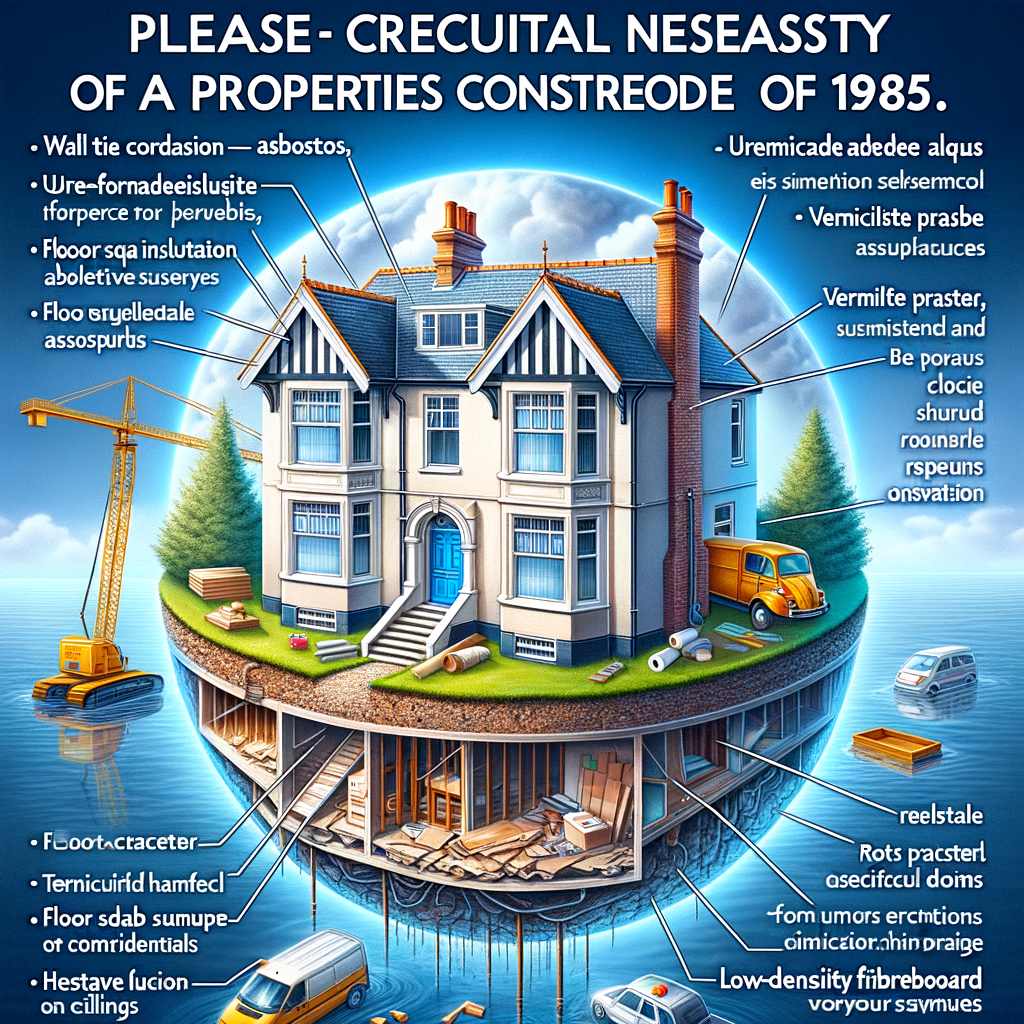Unveiling the Necessity of a Level Three Survey for Pre-1985 Properties
The Pervasive Issues of Older Properties
Purchasing a house, notably one with a rich fused history, often comes with its own distinctive set of challenges. Properties built before 1985 carry unique architectural and preservation concerns. Without an informed evaluation, these structures may present costly, and potentially dangerous, complications to new homeowners.
An exhaustive Level Three Building Survey isn’t simply a formality in real estate transactions for these buildings – it is indispensable. This survey can disclose concealed difficulties, which may range from structural weakness to health hazards. Neglecting this critical step could result in enduring the expense of high repair costs and risking the wellbeing of occupants.
Wall Tie Corrosion
Used to stabilise the house’s structure, corrosive wall ties present daunting challenges in older homes. These metal ties, owing to years of constant exposure to moisture seeping through the surrounding mortar, can induce significant damage to a property. Rust invariably leads to swelling, which can force brickwork apart, making the structure unsafe. A Level Three Survey can identify areas of potential wall tie failure, thereby averting extensive damage.
Urea-Formaldehyde Insulation and Asbestos
Pre-1985 houses may also conceal harmful materials like urea-formaldehyde insulation and asbestos. Suspended asbestos particles can cause severe health conditions when inhaled, including lung cancer. Whereas, urea-formaldehyde foam insulation, when decomposing, can release formaldehyde gas at room temperature, causing adverse health effects. Within a comprehensive building survey, essential checks for these lethal substances are performed, mitigating future health risks.
Settlement of Floor Slabs and Electrical Hazard
Older homes can also exhibit floor slab settlement and dangerous electrics. Settling is a term for the sinking of a house due to soil compression, which often leads to the formation of cracks. Additionally, outdated and ill-maintained electric systems can pose severe fire and electrocution hazards. An experienced surveyor can perform methodical checks, hence detecting these issues which would slip a layman’s eye.
Mould and Damp, Rot, and Subsidence
The presence of mould and damp in a house can signify fundamental issues like rot and subsidence, leading to structural instability. Damp conditions promote harmful fungi and bacteria, impacting respiratory health if not addressed quickly. A thorough Level Three Survey can identify these subtle signs, facilitating the remediation process before it escalates further.
Vermiculite Plaster and Wholesale Use of Low-Density Fibreboard
Materials common to older properties, like vermiculite plaster and low-density fibreboard (LDF), can harbor concealed problems. Vermiculite used in plaster may host asbestos traces, and LDFs in ceilings have been associated with significant fire and structural hazards. By conducting an exhaustive building survey, hidden threats related to these materials can be illuminated.
Defective Windows
An often overlooked issue in older houses is defective windows. Proving much more than a mere aesthetic annoyance, window defects can increase heating costs, cause ineffective weatherproofing, and offer easy access for burglars. Essential to a Level Three building survey is assessing the condition of windows to prevent future frustrations.
At Flettons, we’re committed to safeguarding your investment. When considering a property purchase, trust our seasoned expertise to reveal any hidden threats. For a thorough building survey, get your instant quote through our quote calculator or reach out directly at 0203 691 0451. Your home’s safety is our top priority.
———————————————————————-

